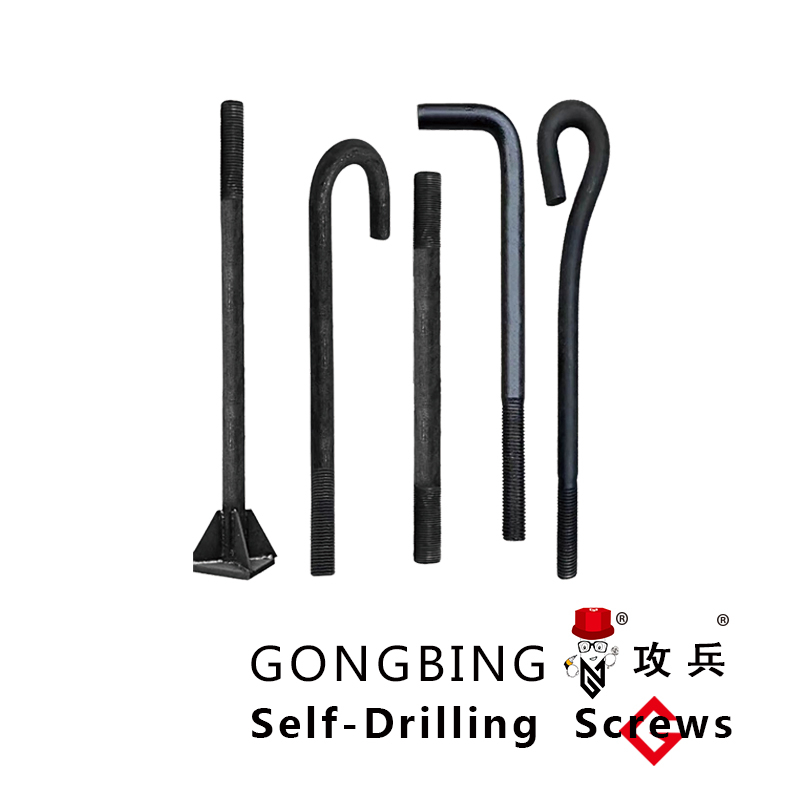Understanding the Impact of Loose Anchor Bolts on Structural Integrity and Safety
Understanding Loose Anchor Bolts Causes, Consequences, and Solutions
Anchor bolts are essential components in construction and engineering, providing stability and support to structures by securing them to their foundations. However, when these bolts become loose, they can pose significant safety risks and structural integrity issues. This article explores the causes of loose anchor bolts, the potential consequences, and effective solutions to mitigate the problem.
Causes of Loose Anchor Bolts
Loose anchor bolts can result from a variety of factors. One of the primary causes is inadequate installation. If anchor bolts are not tightened to the appropriate torque specifications during installation, they may gradually loosen over time due to vibrations and dynamic loads. Additionally, factors such as corrosion, which can weaken the bond between the bolt and the concrete, may also contribute to loosening. Environmental conditions, like temperature fluctuations and moisture exposure, can lead to expansion and contraction of materials, further exacerbating the issue.
Improper selection of anchor bolt material is another critical factor. Using a material that is not suitable for the specific project requirements can result in structural failure. For instance, choosing low-grade steel in environments prone to corrosion can significantly reduce the longevity and effectiveness of the bolts. Furthermore, physical damage or wear over time can compromise the holding capacity, leading to looseness.
Consequences of Loose Anchor Bolts
loose anchor bolt

The ramifications of loose anchor bolts can be severe. A primary concern is the risk of structural failure. Buildings, bridges, and other constructions rely on anchor bolts for stability; any compromise could lead to significant hazards, including accidents and injuries. For example, in seismic regions, loose anchor bolts can reduce the ability of structures to withstand earthquakes, increasing the likelihood of catastrophic failures.
Additionally, loose anchor bolts can lead to costly repairs and downtime. When bolts are found to be loose, it may require extensive inspections and potentially costly retrofitting to correct the issue. Failure to address loose bolts promptly could also lead to a decline in property value and increased insurance premiums due to perceived risks.
Solutions to Prevent Loose Anchor Bolts
Preventing loose anchor bolts requires a proactive approach. Proper installation practices are paramount; ensuring that bolts are installed according to manufacturer specifications can significantly reduce the risk of loosening. Regular inspections and maintenance should also be part of the overall strategy. Scheduled checks can identify any signs of looseness early, allowing for timely repairs.
Additionally, using the right type of anchor bolt for the environment and application is crucial. Engineers should select corrosion-resistant materials when appropriate and take into account the specific loads and conditions the bolts will face. Utilizing locking mechanisms or epoxies can also help to secure bolts against loosening caused by vibrations.
In conclusion, loose anchor bolts present a serious challenge in construction and engineering. By understanding the causes, recognizing potential consequences, and implementing effective solutions, stakeholders can enhance the safety and longevity of their structures, ensuring they remain sound and secure for years to come.
-
Weatherproof Plastic Expansion Anchors for OutdoorNewsJun.06,2025
-
Sustainability in the Supply Chain: Eco-Friendly TEK Screws ProductionNewsJun.06,2025
-
Load-Bearing Capacity of External Insulation FixingsNewsJun.06,2025
-
Double Head Bolts: Enhancing Efficiency in Industrial MachineryNewsJun.06,2025
-
Corrosion Resistance in Chipboard Screws: Coatings for Wholesale DurabilityNewsJun.06,2025
-
Butterfly Toggle Bolts : Enhancing Structural ResilienceNewsJun.06,2025
